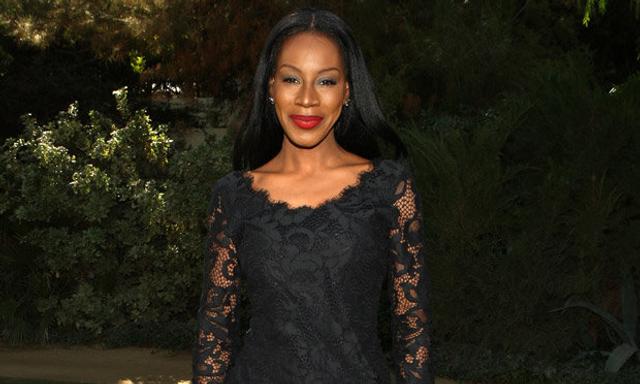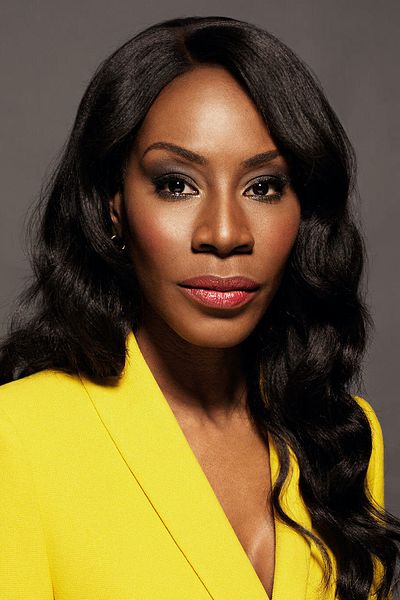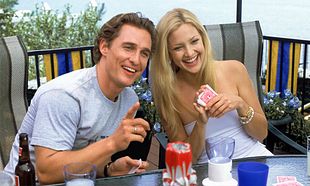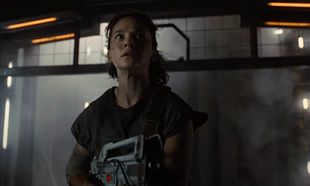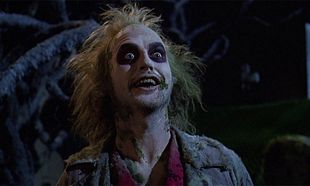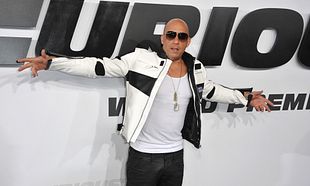Writer/director Amma Asante began her career as a child actor, landing a regular part in the popular British school drama Grange Hill and going on to gain credits in other British TV series including Desmond's and Birds Of A Feather. In her late teens, she left the world of acting and made the move to screenwriting; two series of BBC2 drama Brothers And Sisters followed, which Asante wrote and produced.
Asante made her writer-directing debut with the 2004 feature film A Way Of Life, the gritty story of a poor white single mother in a deprived, working-class area of Cardiff who becomes involved in a violent racist assault. The film premiered at the Toronto Film Festival, later winning Asante 17 international awards for her writing and directing, including The BFI London Film Festival's inaugural Alfred Dunhill UK Film Talent Award, created to recognise the achievements of a new or emerging British writer/director. A Way Of Life also brought her The Times newspaper's Breakthrough Artist Of The Year honour at the South Bank Show Awards, as well as the BAFTA Carl Foreman Award for Special Achievement by a debut filmmaker.
Belle, written by Misan Sagay, is Assante's second film as director. Set in the rarefied Regency world of novelist Jane Austen, Belle tells the story of Dido Elizabeth Belle (Gugu Mbatha-Raw), the illegitimate, mixed-race daughter of a naval captain who is raised in London by her great-uncle Lord Mansfield (Tom Wilkinson), Lord Chief Justice of Britain. After she falls in love with trainee lawyer John Davinier (Sam Reid), Belle's eyes are opened to the injustices of the world – notably the case of the Zong slave ship, which saw the massacre of 142 Africans in 1781. Presiding over a landmark trial that may finally put an end to slavery throughout the British Empire, Lord Mansfield must decide whether or not the Zong's human cargo was lawfully jettisoned.
How did you become involved with Belle?
My first film, A Way Of Life, was released in 2004, and I was certain that I wanted to write and direct my second project, so I was turning down a lot of stuff. And then after that I worked on three separate projects. One was a thriller, based around the theme of honour killings, another was an adaptation of a Jane Austen piece, called Lady Susan, and then the third was a project set in 1940s Berlin. What happened then was that, in around 2009, because of the financial crisis, all three projects suddenly collapsed at the same time. I'd been working on all three for quite a while, and they all went down within, well, weeks of each other, actually, which was quite a shock. Because I thought I was doing the right thing and being sensible by having at least three projects that I was completely in love with on the go.
What happened next?
Probably about two months later Damian Jones, the producer of Belle, went to my agent. He said, "I have this story I want to tell, it's a Jane Austen-esque story with a black lead, and I'm told that Amma is interested in doing something similar." Which was true. And so Damian came to me with the postcard of the painting of Dido.
Were you immediately taken with the story?
I'll be honest with you, when he did that I thought, 'This is really intriguing. I'm really interested in finding out who this woman is, why she's there and why the painting was commissioned in the first place.' But I also thought, 'A period drama with a black lead? It won't get made.' [Laughs] So I felt I was humouring Damien for a while, kind of stalling him. But he was very determined: once he gets an idea in his head there's no stopping him.
What was it about the painting that you found so interesting?
Well, it's an unusual painting, because it's very clear that they're both equals, and it's one of the first, or at least the first of its kind, that we know about in England, depicting a person of colour next to a white person as an equal. So I was quite intrigued. A few months before I'd gone to an exhibition in Holland that traced the appearance of people of colour in art, in classical European art, from about the 14th century onwards right up until the 19th century, and it charted the progression from background character through to muse. So with that knowledge I felt I knew enough about the painting to know how unusual it was. I felt really strongly what made the painting really fascinating was Belle's presence. That's what changed it from being the stock, standard 18th-century portrait to something quite extraordinary.
How did you research the film? It seems that not a lot is known about Belle...
They say not a lot is known about her but once I started to do a bit of research, lots of things came up. There were two things that really gave me my hook, if you like. The first was what I felt when I looked at the painting, and that was how Elizabeth's hand is resting on Dido. I saw a sister-ship between them, a great deal of love. So that was the first thing that came to me: love. Family love. The second thing was how she was dressed.
When you look back on your first film, do you see any comparisons between A Way Of Life and Belle?
Definitely, 100 per cent and it's deliberate. Even down to the surface details in Belle, of having Mabel, the Mansfield family's maid, being Welsh. It was very important to me. But that's also giving the message that black people were everywhere in Britain. It's may be a less than subtle way of doing it, but it is a message to the audience. Other than that, I definitely see the comparisons of race, gender, status and identity, and I do love telling a story with a female lead. I love being empowered to be a female, to see things through the female lens and be able to present – for better or for worse – women with a mission, whether that mission be positive or negative. And, as a female director, it's been really interesting working with two really great female leads as well – I've been really lucky. But I definitely see the connections. They're both about themes that interest me, and I think they're universal and endless.
Both films also feel like they could be about victims, and yet they're not...
Yes. I think that's true. You know, we put so much of ourselves in what we do, and I think that's probably the case because that's how I see myself: I'm not a victim. I could be, but I refuse to be, wherever possible. And I think that's the lens that I see life through – wherever possible, there is a certain kind of fight that you can take to empower yourself. The question is: how do you do that positively? How does that feed into what you do? The lead character in A Way of Life had choices, limited, but nevertheless choices – she just felt that she didn't. In Belle, the lead character has choices too, but she fights for those choices. She fights to make sure that these choices are hers to make. She won't have anybody telling her who she is. There's the big scene where she does that. Everybody is standing round her, and she lays it all out. She defines who she is. She doesn't allow society to define who she is.
I think a lot of people will be surprised by the fact that it isn't just the tale of a black girl who can't fit in. There are shades of acceptance within the story.
I've said this before, but this is a story about a girl who is loved – and how complicated that is, in some ways. I like simple stories that have really complicated undertones. And the complexity of this story is that she's privileged. She's more privileged than most white people of that time. She can read, she can write, she's living in a palace. She has so much, and yet what she doesn't have is equality. She has to struggle for that. She is loved. There's no doubt. It's not a Cinderella story: "Nobody loves me". She is loved. But she needs to be loved in the right way
Did you have any concerns about presenting Dido's story that way?
Yes, because, in many ways, you might not like her, if you chose not to. I mean, she's privileged – why doesn't she shut up and accept what she's got? There are many women of that period who might well want to say to her, "You know what? You have a good life. You have a maid to get you dressed every morning, a lovely bedroom, food to eat every night, and you don't have to be on your hand and knees scrubbing the floor." She's certainly not Mabel, which is what Lord Mansfield's family could have done to her. They could have made her a Mabel and still taken care of her and made sure she was safe, but they didn't. She's much more elevated than that, and yet she's still not equal – she's not allowed to eat with the rest of the family in certain circumstances. I thought a lot about that concept of injustice, which resonates deeply within all of us. And I think that's what allows us to connect with her. Yes, she has so much more than many other people, but what she doesn't have is that basic element of justice and equality in her life. That's important to all of us, I think.
It's interesting you mention the fact that she sometimes can't eat with her own family. I'd assumed that was because of her colour, but it's because she's illegitimate. That scene is genuinely quite shocking.
There's another scene that's probably much more on the nose. There's a conversation that Dido has with John Davinier where she says, "I've come to realise that I have freedom twice over, both as a negro and as a woman." Because she's a woman who has money. Which was quite rare in those days, because either your partner would own your money or your father would own your money. Penelope Wilton, who plays Lady Mary Murray, speaks about this so beautifully and so eloquently. She got it immediately. In a sense, she, too, in certain circumstances might not be able to eat with guests, because Lady Mary is the unmarried sister. There are all these levels of status that become relevant. So, yes, it really was my intention to say, "Do you see how complex this world is? Do you see how crazy this is?" Racial issues were not the only injustice of the period, there were lots of prejudices. Being an illegitimate child, Dido was doubly tainted. And yet her privilege is that she's still loved and still lives a good life, despite all of those things. This father of hers, who has not married her mother, still wants to love her and take care of her and have her brought up in a way that is fitting to his bloodline. That says a lot about her family, and a lot about Lord Mansfield, her uncle who adopts her.

As you say, this isn't simply about race. Everyone is involved in some kind of society sweepstake as they try to push ahead in their lives...
Yes. Look at Oliver Ashford. He's the second son and he's pretty much in the same position as Dido's cousin Elizabeth. He has a name, he comes from a good family, but he's also without money. Who's going to want to marry him? For a woman, marrying the right man is incredibly important – that ends up being your bread and butter. But nobody necessarily looks back and thinks, 'Well, actually, men had the pretty much the same issue.' Instead, they would go and join the Navy or the Army and continue their gentleman status in that way.
Did anything change once you got to set and started shooting?
Well, there's always stuff the actors bring to a performance. You kind of hook into something that you might have known subconsciously, or may not have known at all, something that suddenly that rises to the surface. But the problem with doing a costume drama is how much time you have to film. You don't really have time to experiment in the way that you might be able to do with something that's more contemporary, simply because of how long it takes to set everything up. So I always tried to get a rehearsal period. Take, for instance, the scene where Tom Felton's character grabs Dido and does what he does to her. We rehearsed that quite a bit. And that brought certain things to me, certain undercurrents in what he was doing, that I wanted to bring to the fore when we actually filmed it. But as a second-time filmmaker, I didn't want to be too experimental and maybe lose some really key important stuff that I needed to tell the story through experimentation.
Did seeing your cast in wigs and corsets make a difference?
Yes. What the corsets did for me is make me understand how literally restricted these women were. So the way I would shoot changed. You'll find that there's a lot of back shots, and that's because of the way the costumes fell – the way that the woman's body is exaggerated in the costumes. You can see a lot more from behind – you can see that it's not an actual waist. Something has happened there to make that waist look the way that it does, so tiny. So the way that I shot things changed, and we even changed a few things afterwards. We made Lord Mansfield's desk bigger in post-production than it actually was in the courtroom, because that gave him a certain amount of gravitas. It shows us giving weight to the whole Zong story; that Lord Mansfield's decision is big and important.
Did anything else change?
I definitely knew that I wanted certain shots to look like paintings. But there was also the development of my "English Rose" idea, which evolved on set. Often you'll see Gugu and there'll be roses around her. Constantly, because I'm saying, "Look, she's a black English Rose!" I was always saying, "Get roses! We need roses!!!" [Laughs]. Just being a little bit of a diva. Because it's no fun if you can't be a bit of a diva, right?
Belle releases in cinemas from June 13th.
